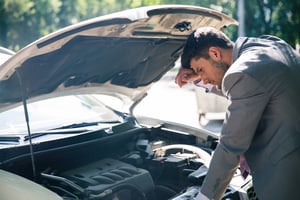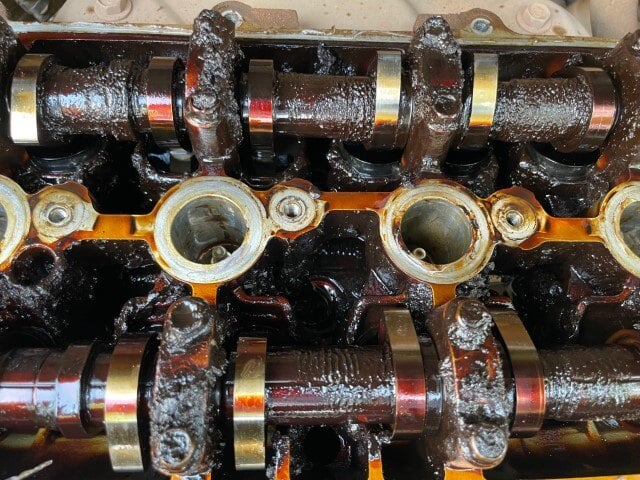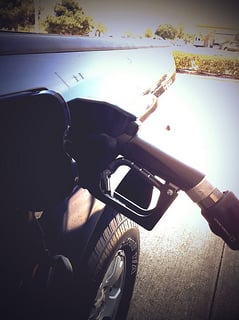When do you need an engine oil flush?
There’s an ongoing debate among gearheads regarding whether engine flush products are good or bad. And the answer to that depends on the situation...

At first glance, that sounds like a loaded question. Kind of like “should I eat a balanced diet” or “should I get enough exercise”? I mean, what’s the possible downside to cleaning an engine? Or is that really what we mean to ask? Maybe we’re really trying to get at something else?
 Cleaning your car’s engine can mean only one of two possibilities (or two of two). Cleaning the outside of the engine vs. cleaning the inside.
Cleaning your car’s engine can mean only one of two possibilities (or two of two). Cleaning the outside of the engine vs. cleaning the inside.
Cleaning the inside of the engine, that’s a no-brainer. We’re talking about cleaning the areas of the engine and fuel system where fuel and oil migrate and do their job. Of course you’re not going to take the engine apart and clean it out; that’s not what we mean. Cleaning your engine from the inside would simply entail using a chemical detergent additive to remove deposits and buildup that have developed over time.
Should you clean your engine from the inside? Yes, of course, why wouldn’t you? Engine deposits, especially in the injectors, are the single biggest cause of loss of performance and lower fuel mileage. Fortunately, cleaning these important areas is as simple as using a good multifunction fuel additive with detergency. It will remove those deposits over time, typically within a couple tanks of fuel.
Beyond deposits in the fuel-borne areas, you’ve also got oil sludge to consider in the areas where the lubricating oil works. No “engine cleaning from the inside” would be complete without considering those. Oil sludge can be hazardous to the health of your engine in a number of ways (it reduces the effectiveness of the oil, keeps the oil from dissipating heat properly, and reduces the sheer volume of the oil in your engine). The best recommendation is to change your oil at the proper intervals to prevent sludge from forming in the first place. But if you’re past that point, you would want to use an Engine Flush cleaner to remove oil sludge and bring it back into the oil in advance of your oil change.
What about cleaning the outside of your engine? Does it really matter if you do that? Apart from the simple fact that some people just like the look of a clean engine, it’s not always a bad idea to clean the outside of your engine. The more dirt you can remove, the less chance of any dirt, dust or particulate migrating to the air filter. It may not be the biggest issue in the world, but a clean-looking engine has no downside. You know, apart from the time and labor it takes to get it clean. But hey, at least when you’re done, you can stand back and feel pride in the visible results of the work you’ve put in. To get the job done, you’ll need some engine degreaser, car wash solution (maybe), plastic baggies and tape or rubber bands, a long-handled parts brush, and a hose + water supply.
Here are the basic steps you’d need to take.
Step 1: Prepare your engine for cleaning by first removing any obvious debris from the hood and vent opening. A brush helps to speed this process along, compressed air would be even better (though most people don’t have access to that). Next, you’ll want to cover the sensor, any exposed wiring, the spark plug openings, and the distributor with the plastic baggies and secure them in place. This just protects those areas from getting too much water in there. This is purely a precaution, as many engines come already sealed. But you never know.
Step 2: Run the car for 5-10 minutes. All you’re doing here is warming it up to loosen grease and oil that has accumulated on it.
Step 3: Take a water-based or citrus-based degrease cleaner and apply it from the bottom up. Let it sit for 3-5 minutes. If you happen to get any of it on your fender or car exterior surfaces while you’re applying it, go ahead and hose those off so it doesn’t strip off the wax (because it definitely can do that). If your engine is really dirty, this is where you’ll want to use the long-handled parts brush. Use it in conjunction with the car wash solution to brush off some of the dirty parts, especially the ones in areas that may be hard to reach.
Step 4: Rinse it all off. Just use your regular garden hose with the water set at stream. Don’t use a high-powered spray, as it can damage the sensors. The stream is all you need.
Step 5: Wait a few minutes to allow some of the water to evaporate off from the heat of the engine. Then take a microfiber cloth and finish the job.
Optional Step 6: If you really want a shiny finish, you can now use a brand-name engine cleaner. Spray it on and buff it off.
Boom, now you’re done.

There’s an ongoing debate among gearheads regarding whether engine flush products are good or bad. And the answer to that depends on the situation...

Its time to look at this issue of “engine oil sludge” – what it is and, more importantly, whether you should be concerned about it in your engine....

There are a lot of fuel additives out there that don’t really do anything.But’s that not to say there aren’t fuel additives well known within the...